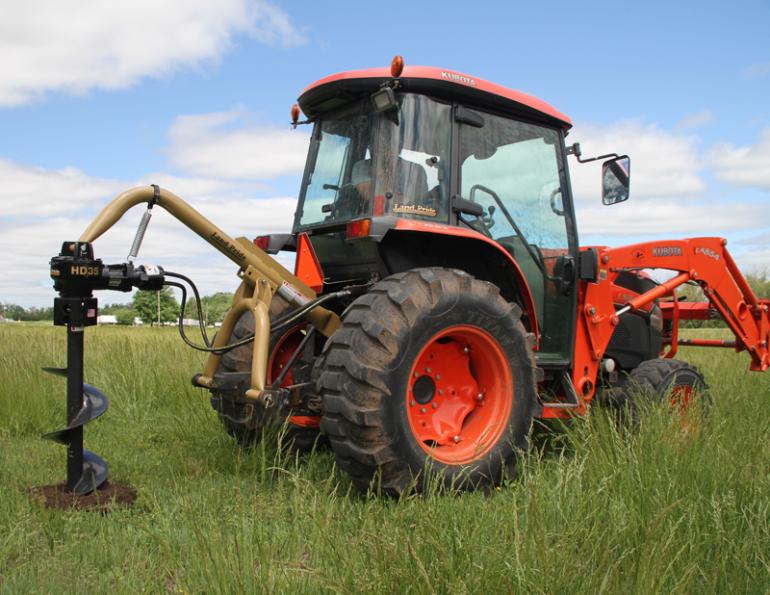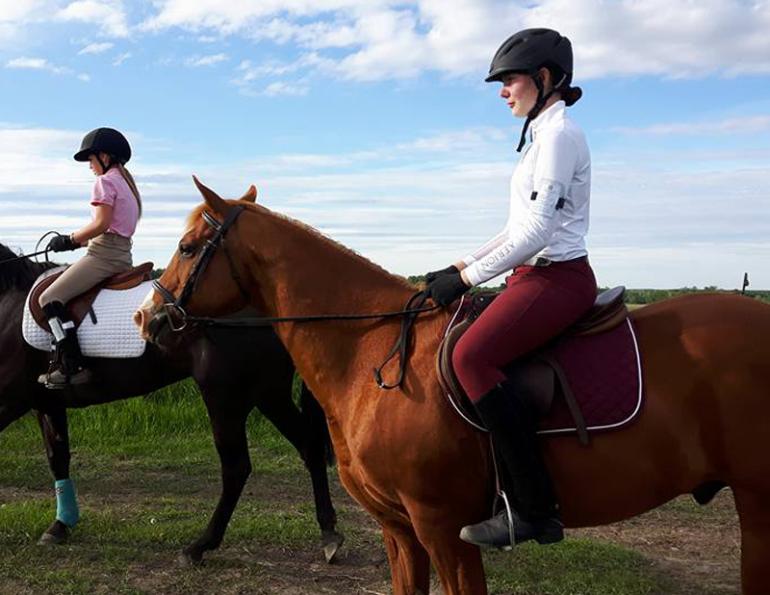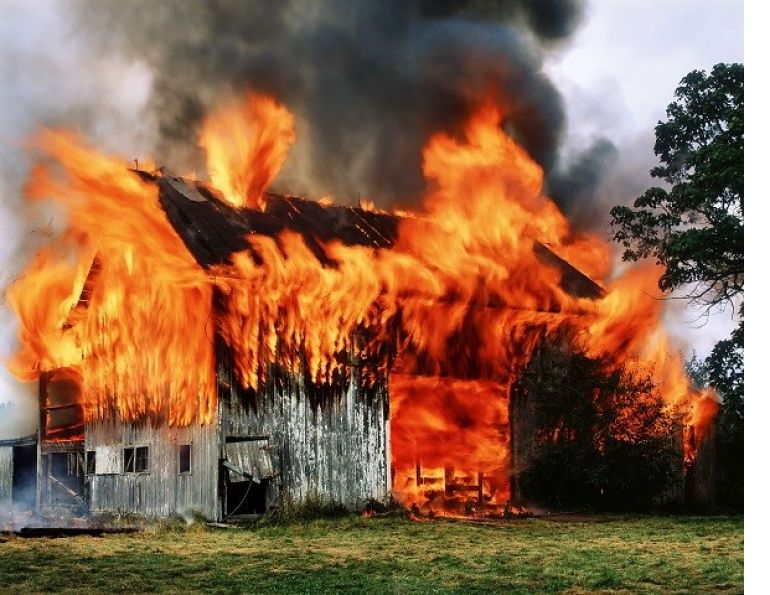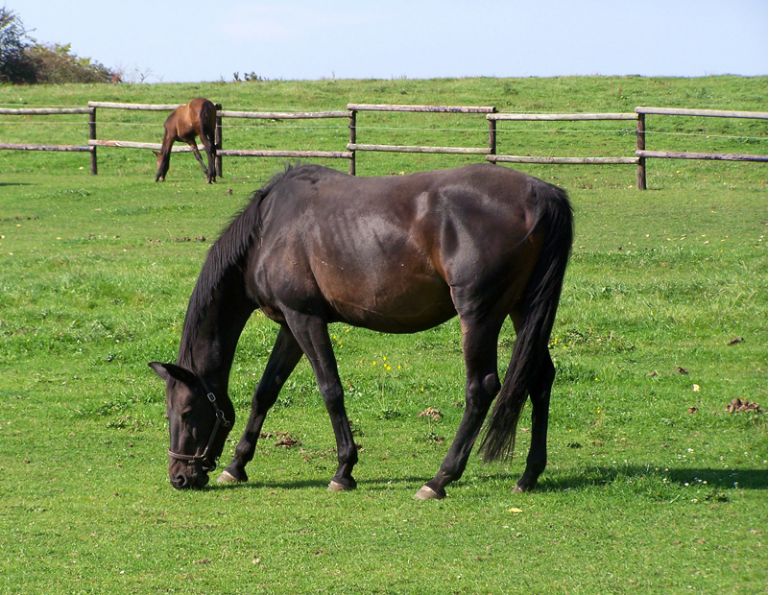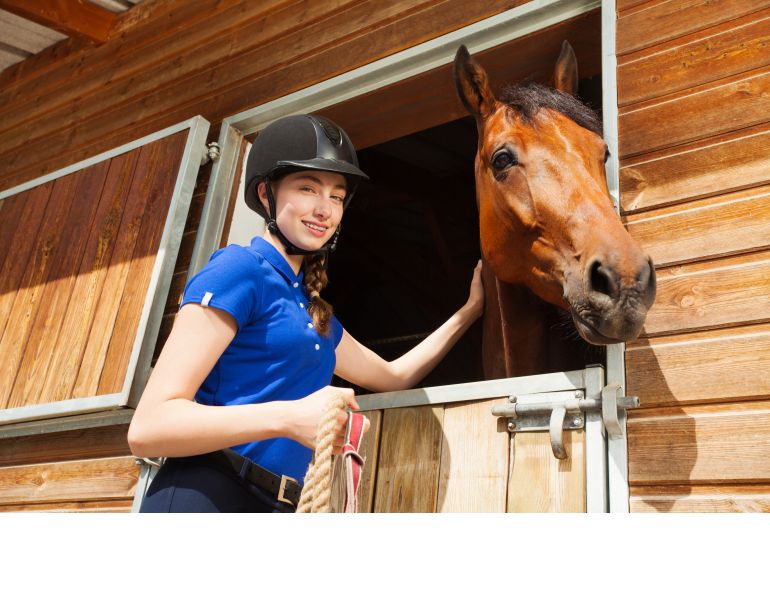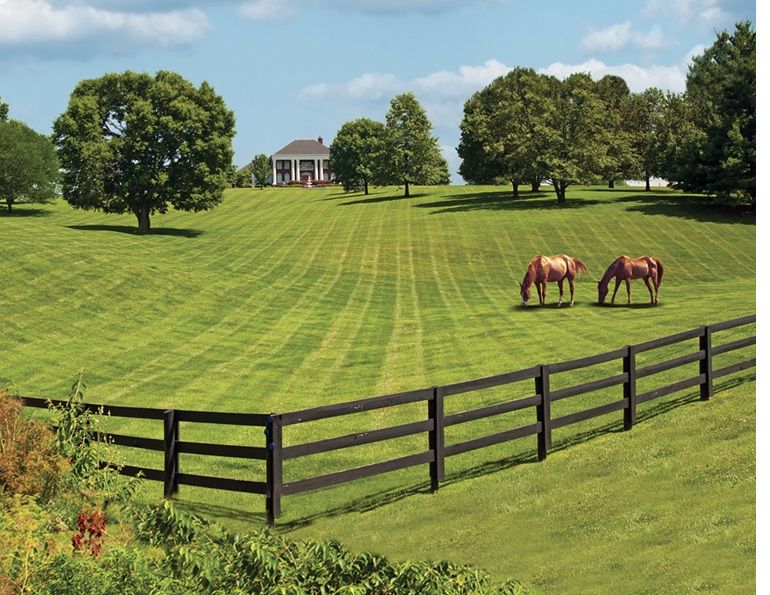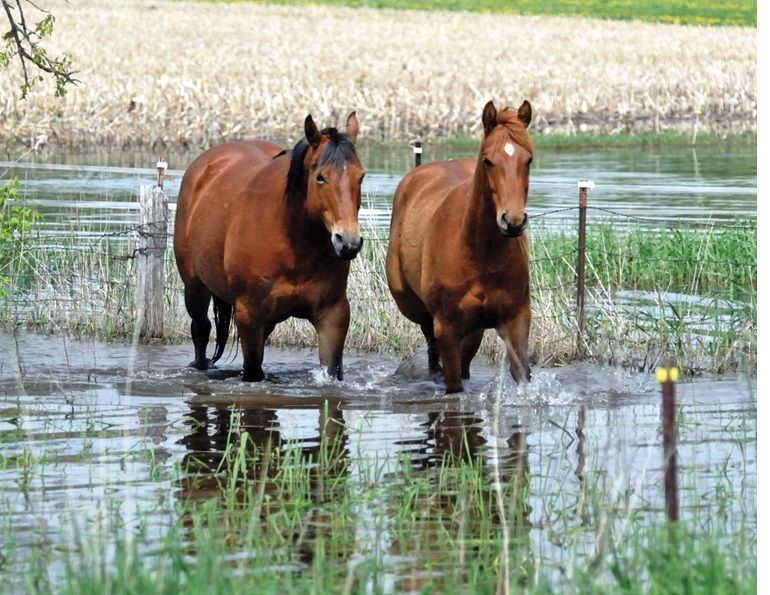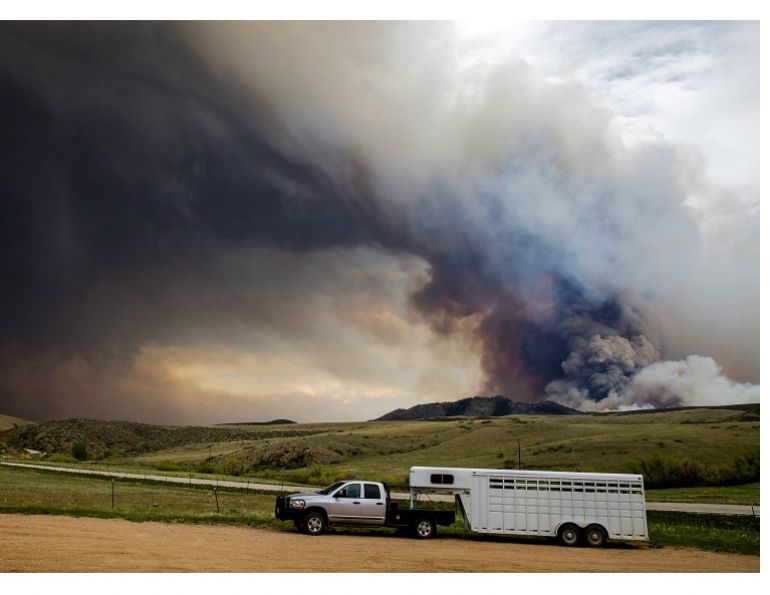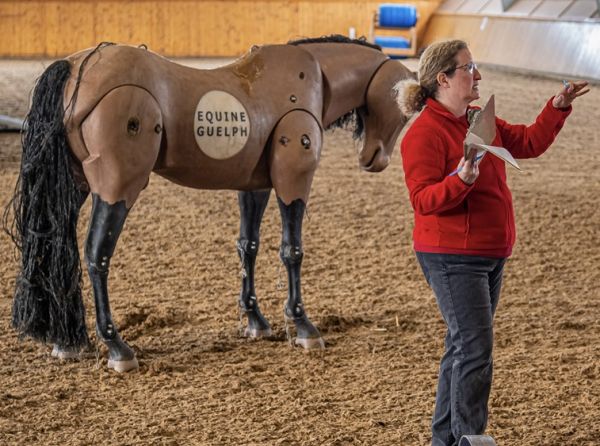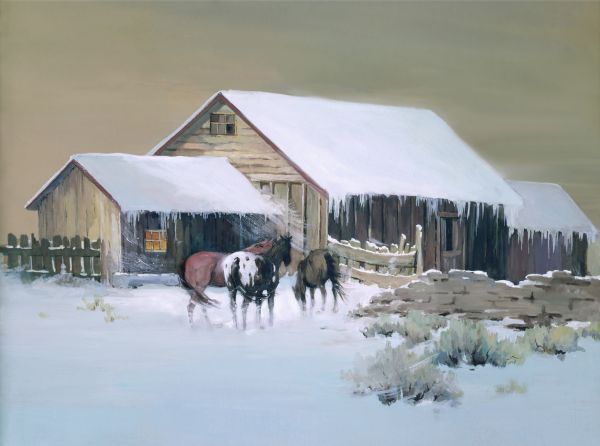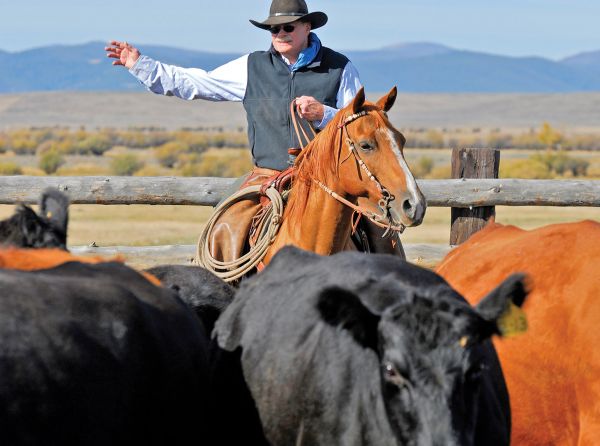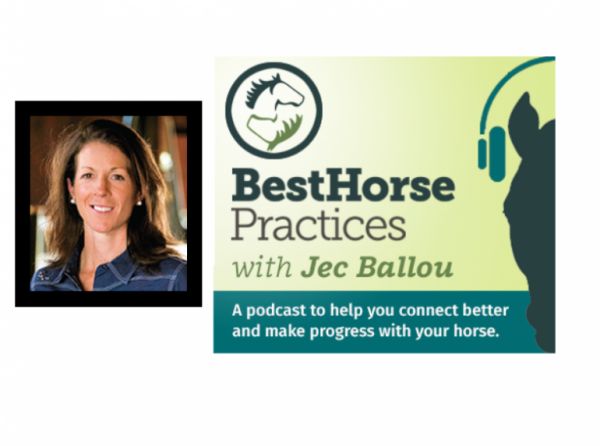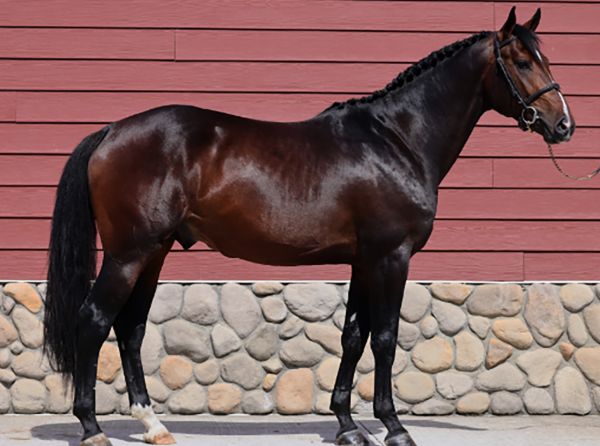By Margaret Evans
Innovative accessories and implements can transform your tractor into a multi-tasking machine that saves you time and labour.
It was spring 1997. Just four months previously the south coast of British Columbia had been hammered by the massive “Blizzard of 96” that dumped 150 cm snow, crippled transit, shattered trees, cut off power, paralyzed day-to-day life, and caused chaos for hundreds of thousands of people. For people with horses, animal care was in crisis as water lines froze, vehicles were stuck behind mountainous snow drifts, and feed desperately needed to be moved to livestock. The only equipment that was operating were tractors and heavy duty machinery, none of which we owned.
“We need our own equipment,” I said flatly to my husband Tom. “I don’t ever want to be stuck like this again.”
“Let’s check it out,” he agreed.
So began our life on the farm with equipment that met every specific and seasonal need. We started out with a Ford tractor, upgraded to a Massey Ferguson, then traded that in for a 60 horsepower Kubota 5030 shuttle four-wheel drive tractor. That four-wheel drive option has been the most valuable feature of the tractor which we’ve had now for almost ten years.
But tractors by themselves are limited without attachments. Deciding on what attachment to purchase will be driven by your needs and priorities of use. Ask yourself the following questions: Do you need the tractor to simply move square hay bales and manure with a loader? Or will you need to move much heavier round bales with a bale spear? Do you need to harrow your fields or your arena? Do you need to clear bush with a rotary cutter, grade your driveway with rakes, or clear snow in winter with a blade or a blower? Are you planning to put up your own hay? Will you mow, tedder and windrow, then have a local farmer custom bale, or will you bale the hay yourself? After clearing land, will a rototiller be needed to dig out rocks, roots, and sticks before levelling and sowing to pasture, and then will you need a seed spreader? What about fencing repairs and the need for a post hole auger?
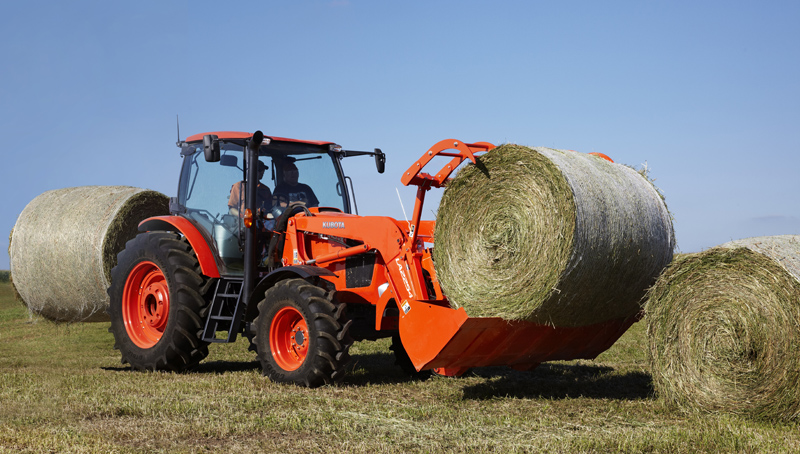
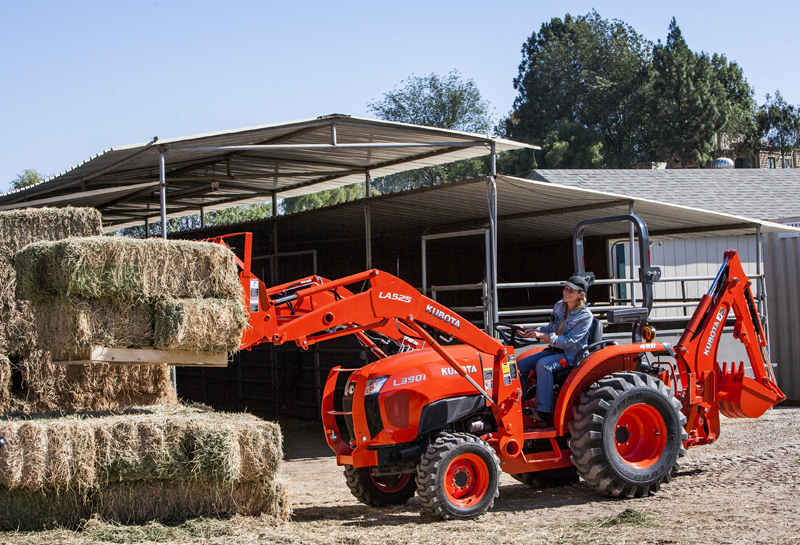

Horse people move a lot of hay, and with the right tractor attachment the chore will be fast and easy. Top: Moving round bales two at a time with a loader and bale spears. Bottom Left: Moving square bales on a pallet with a pallet fork. Bottom, Right: Moving square bales with claw grapples.
Over the years we gathered all these attachments and learned to appreciate all their specific uses. We learned the importance of matching the class of tractor we had with the class of implements we needed. Inappropriately matching a tractor with overheavy attachments or those that do not match the engine power can cause excessive wear or damage. But once appropriately sized implements are attached, they are really easy to use and open up a world of opportunity for land improvement and maintenance.
“For small farms, hobby farms, and acreages we really look to the needs and applications of the property,” said Adam Haney, senior marketing specialist with Kubota Canada Ltd. “For instance, if they are not actually harvesting crops such as hay and only need to move materials around (hay, shavings, earth etc.) then a smaller frame tractor with excellent maneuverability is more ideal. If the tractor is going to be used as a loader tractor only, then there is no need for a mid PTO and thus a less expensive model can be selected. If this is a one tractor operation then it would need to be used for multiple applications (such as) moving materials, cutting, mowing, mid or three point loader work, snow removal or blower/blade/sweeper work.”
The PTO, or power take-off, on a tractor is an output shaft at the rear that allows attachments to be secured and driven by the engine.
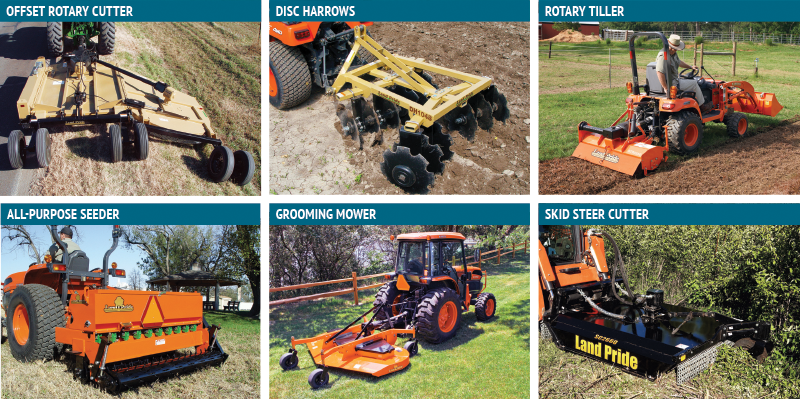
When deciding which attachments to purchase, carefully consider your needs and priorities, then discuss them in detail with an experienced tractor dealer who can help you choose the best options for your requirements.
As Haney pointed out, there is no one simple answer as to what implements are the best. That is why it is a valuable investment of time to talk to a dealer trained and experienced in tractor uses and their appropriate attachments.
We discovered that attachments have their greatest value according to season (snow clearing in winter, harrowing and grass cutting in spring and summer, barn cleaning and fence repairs year round) and like most acreage owners, we bought new attachments as the need came up.
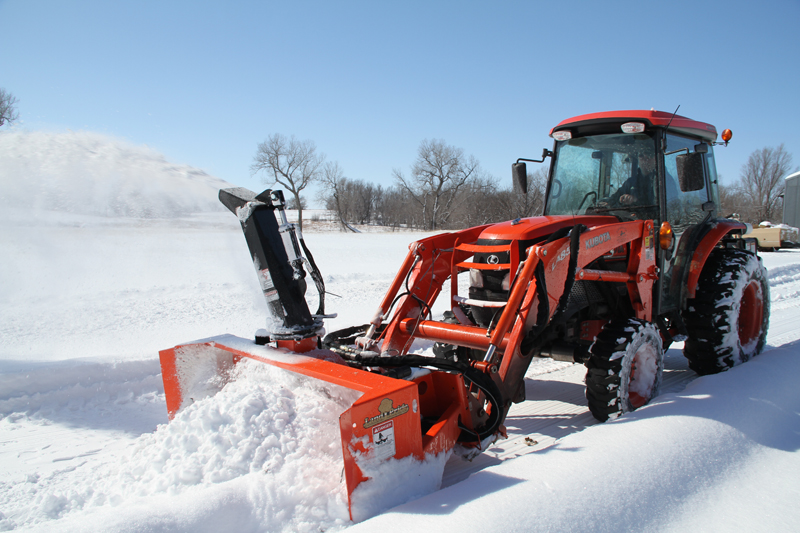
Keeping ahead of Mother Nature is a huge task in winter months. Fortunately, snow removal accessories come in a variety of sizes and options.
Given all the brush that had to be cleared, we used a Land Pride rotary cutter which worked well on all the tractors we upgraded to. According to Haney, Kubota has partnered with Land Pride Implements to offer more options in three-point attachments from box scrapers to mowers, post hole augers, and compact drills.
“Since 2007, Land Pride has had a marketing alliance with Kubota,” said Dee Warren, marketing manager with Land Pride. “The Land Pride/Kubota Tractor Corporation Marketing Alliance has allowed us to team up with most of the Kubota dealers across the U.S. and Canada to offer Performance Matched products for Kubota Tractors and SVLs. The relationship has been mutually beneficial for both companies.”
There likely has never been a better time for consumers to select farm products to match their needs.
“The tractors most well suited for acreage use usually fall in to the 25 to 60 HP range, have a three-point hitch, and a rear PTO,” said Dave Heaton with Conterra Industries in Strathmore, Alberta. “If you plan on running a mid-mount mower, or a front-mount snowblower, you will need a mid PTO as well. The biggest mistake most tractor purchasers make is not identifying what they plan to do with the tractor today and in the future, and then having an educated conversation with their dealer to select a tractor that best fits their needs.”

Allflex mower. Photo courtesy of Land Pride.
An example of that, said Heaton, are the challenges that come with moving large round bales with the loader.
“You will need a loader with a lift capacity of over 680 kg (1,500 lbs). If you plan on hauling round bales with your three-point hitch you will need a lift capacity of 680 kg (1,500 lbs) on your three-point hitch. It is also very important to factor in the weight of what you are lifting plus the weight of the attachment and compare the total to the lift capacity of the tractor.”
He said that the most important thing is to match the operating specification of your tractor to the operating specification of the attachment.
“This is very important for their safe and efficient operation. For example; running a rotary tiller attachment that is rated for a tractor between 30 and 40 HP on a 50 HP tractor is asking for trouble. The attachment is not designed to handle the additional power and will eventually fail. Another major problem is exceeding the lift capacity of the three-point hitch or loader. If your tractor is rated at 2,000 lbs, yet your bale spear is only rated at 1,300 lbs, this could lead to problems lifting a 1,500 lbs bale. Our most popular attachments by sales volumes are rotary mower, Conterra Road Graders, Conterra Arena Max, bale spears, and either front or rear-mount snow blades.”
Heaton said that the most common attachments by task are feed transport (loader with bale spear or grapple, three-point bale spear, or feed wagon), arena grooming (flex harrows, three-point harrows, cultivator or disc harrows, or the full array of arena grooming attachments), pasture/manure maintenance (flex harrows, seeders/spreaders, aerators), road maintenance (rear blades, box scraper, or dedicated road maintenance products like the Conterra Grader), lawn and brush care (rough cut mowers, finishing mowers, mid mount mowers), snow removal (rear mount snow blade, front mount or loader mount snow blades, and rear and front mount snow blowers), material handling products (pallet forks, bale spears, manure grapples, brush grapples), and fencing products (pull-type post pounders, or three-point PTO drive earth augers or loader mount hydraulic driven augers).
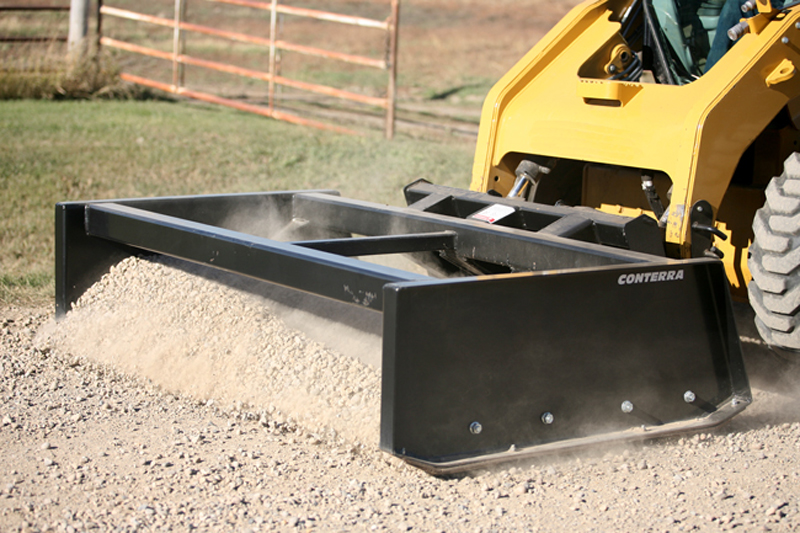
A grader for road maintenance and to level land is often a priority with property owners. This grader from Conterra uses the weight of the material being graded, which is collected between the blades, to maximize downward cutting pressure and improve levelling and floating performance. Photo courtesy of Conterra Industries Inc.
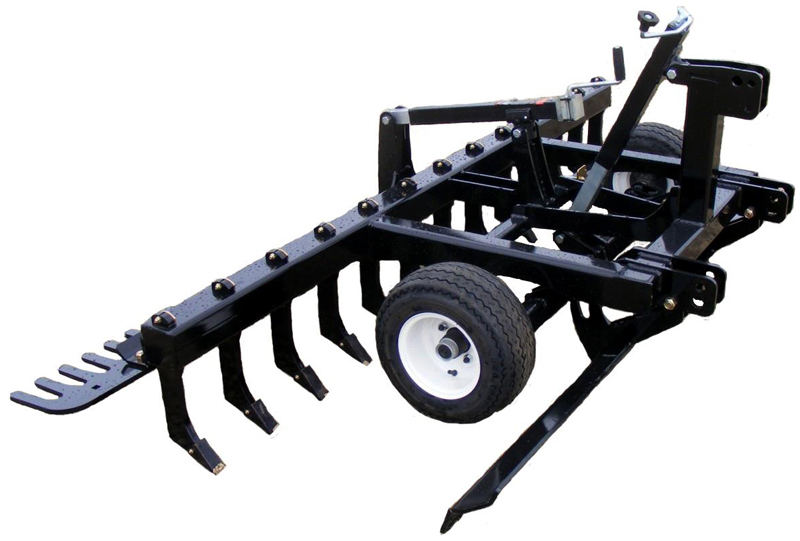
Designed for use on any tractor equipped with a three-point hitch, Conterra’s Arena Max is useful for arena, ground, and shelter belt maintenance. Photo courtesy of Conterra Industries Inc.
Heaton recommended that, when buying a tractor with a loader, get one with the universal skid steer quick attach. He said that most tractor manufacturers have their own mounts, which can be limiting.
“If you get a loader with a universal skid steer quick attach system you will have access to hundreds of attachments on the market,” he said. “The mount gives you the ability to rent some skid steer attachments for use on your tractor, which could save you money moving forward. The skid steer quick attach makes it very easy to change from one attachment to another.”
I can relate to that. While today’s modern tractors are so much easier to work with and hook up, older equipment comes with outdated systems that can turn the experience of attaching equipment into a finger-crunching, curse-peppered event.
While we had bought mostly new attachments, some were used equipment including the Massey Ferguson baler (think Jurassic vintage here). Every July I crawled underneath to thread the baler twine through guides and eyeholes before attaching it to the rear of the frame. It never ceased to amaze me how all those moving parts between the plunger pushing the dried grass into the front and the knotter assembly bundling it into bales and pushing them out the back actually worked.
“One of the most popular attachments we sell are the Paynes Forks (which are) clamp-on pallet forks,” said Brian Goodfellow with Mohawk Equipment in Brantford, Ontario. “These easy-to-attach forks are mounted on the bucket and are a labour and back-saving device for many lifting and loading jobs. There are several capacities to choose from depending on the size of your tractor and the weight you are lifting.”
Goodfellow agrees with the need to have devices that make hookups easier and therefore safer.
“When it comes to three-point hitch attachments, the Pats Easy Change Hitch system is one way to make hookups easier. This system changes your tractor lift arm to a hook for faster and safer hook-ups as well as release of three-point implements. It works on all tractors and implements and prevents strains and injury from trying to position the attachments.”
The three-point hitch is a triangle, or a three-pointed letter A, so that the three arms orient the attached implement with the direction of the tractor. That orientation prevents it from being dragged uncontrollably behind and swinging into the tractor’s rear wheels.
“A must for most horse farms would be the time tested chain harrow,” said Goodfellow. “Chain harrows can be pulled by tractors, ATV/UTV, and lawn tractors, and are ideal for pasture renovation, arenas, race tracks and fields.”
Some of the reasons for harrowing are ripping out moss, spreading manure, aerating soil, dethatching, and levelling ground. Their simple concept of interlinked chains goes back over a century to when Daniel Hackett initially produced the tines on an open hearth fire in 1892 in Cherry Orchard, West Midlands, UK.
Land clearing and cleaning can also be done with another attachment suggested by Goodfellow.
“The Ratchet Rake is a patented multi-purpose implement that quickly attaches to loader buckets. The two rows of angular teeth projecting out and downward enable it to rip out brush and vegetation like no other. It can also be used for removing rocks, preparing gardens, and maintaining driveways and paths.”
When we moved to our 24-acre property south of Cultus Lake, Chillwack, very little of it was usable. It was overgrown with brush, blackberry, and alder. After logging and stump removal, the tractor equipment allowed Tom to get onto the property, cut out brush and clean, groom and level the land. Fencing was re-arranged and post holes dug with an auger. The gravel driveway was graded and more road crush purchased and moved with the loader to fill potholes, then bladed to make it level.
At the end of the day, when the shows are over and the trailer is about to get some downtime, there is a simple way to place it in storage.
“There is an inexpensive way for moving your trailer to and from storage,” said Goodfellow. “It is the Adams hitch, which is a three-point hitch frame that accepts a Reese type trailer hitch. With the Adams hitch on your tractor you can back up to the trailer and use your hydraulic system to lift the front of the trailer and easily manoeuvre it in or out of parking spots.”
Also of great versatility on acreages and horse farms are utility vehicles. Kubota’s line of RTV vehicles offer both a smooth ride and a hydraulic cargo bed useful for cleaning stalls, transporting tools, hauling shavings, or moving a few hay bales.
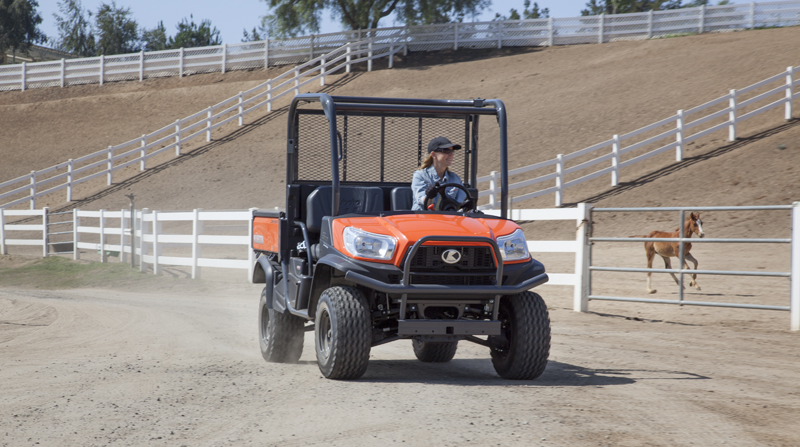
The Kubota RTVX900 features hydraulic cargo bed dumping as a standard feature. The cargo bed, which holds a round bale, has a 1500 lbs payload. Photo courtesy of Kubota Canada Ltd.
Having a tractor opens up enormous possibilities and the right attachments can transform it into a true workhorse.
Thank you to our supporting businesses for their assistance with this feature:
Kubota Canada Ltd.: www.kubota.ca
Mohawk Equipment Limited: www.mohawkequipment.ca
Conterra Industries Inc. www.conterraindustries.com
Land Pride: www.landpride.com



